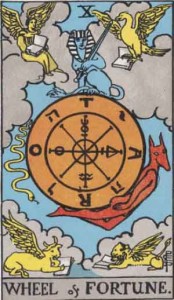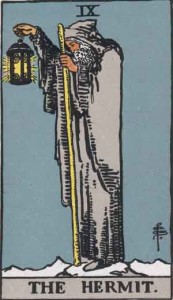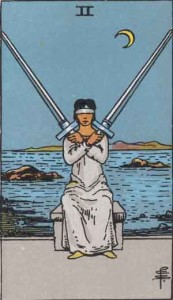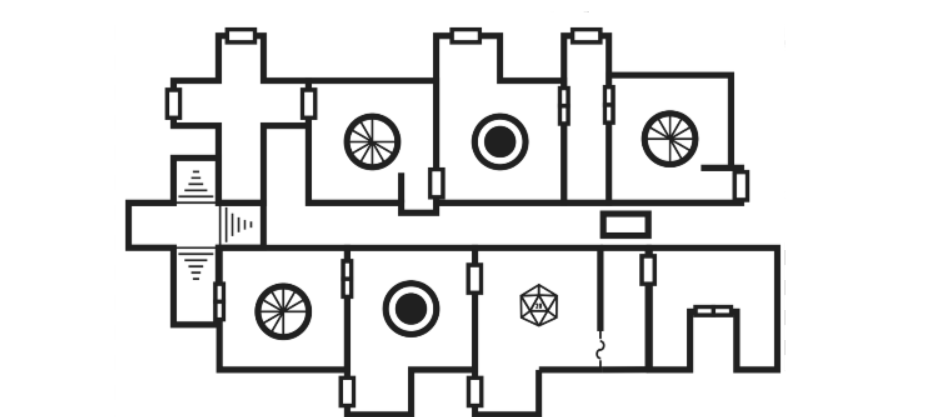 In my current campaign one of the players decided to play a Divination Wizard. Just like our very own fortune teller, the wizard has been helping us piece together snippets of past, present and future. After a couple sessions, I realized using tarot with the Divination Wizard would come in handy to give more detail to the divinations.
In my current campaign one of the players decided to play a Divination Wizard. Just like our very own fortune teller, the wizard has been helping us piece together snippets of past, present and future. After a couple sessions, I realized using tarot with the Divination Wizard would come in handy to give more detail to the divinations.
The 5e D&D Player’s Handbook describes the School of Divination (p. 116) as follows:
The counsel of a diviner is sought by royalty and commoners alike, for all seek a clearer understanding of the past, present, and future. As a diviner, you strive to part the veils of space, time, and consciousness so that you can see clearly. You work to master spells of discernment, remote viewing, supernatural knowledge, and foresight.
There are many forms of divination which all seek to accomplish one or more of the following – discover hidden knowledge, make sense of the past and/or foretell the future. Tarot cards are perfect for this!
While some GMs are great at making stuff up on the fly – many GMs could benefit from some helpful prompting. Tarot cards can really help avoid an awkward lull in the game while the GM racks their brain to describe a divination. The nice thing about tarot is that their meaning is up to your interpretation of the card. Yes, there are traditional meanings to tarot cards but for the purposes of D&D and keeping the story moving the traditional meaning doesn’t matter.
How would using tarot with the Divination Wizard work during actual game play?
Portent – after the player rolls their portant dice after a long rest pull two tarot cards. Then offer a brief “flash” of insight by describing the two cards as separate but possibly related insights. For example:
The diviner rolls 20 and 4, you randomly (or not) draw The Hermit and the 2 of Swords.


The Hermit: The image of a solitary figure holding a bright lantern illuminating the darkness appears in your mind.
What was once unseen will come to light.
Two of Swords: You close your eyes. Seated on a cold stone bench, you are blindfolded with feet firmly on the ground. Your arms, crossed in front of you, feel heavy as you grip a large steel sword in each hand.
This standstill is only temporary, what has been put off will need to be dealt with sooner or later.
How to tie tarot back to the game?
Example 1 (The Hermit)
The party is struggling to take down the big boss and . The diviner replaces the paladin’s attack roll with the natural 20 they rolled earlier. When the diviner uses their portent roll toss in something such as…
“This scene has played out in your mind before and you watch it manifest before you. You call out to the paladin to strike with all their might just as there is a drop in the enemy’s defenses” With a natural 20 the paladin decides to use divine smite and not only double their weapon damage but their smite damage as well.
“There is a bright flash as the paladin’s blade, imbued with divine power, slides under the enemy’s pauldron”
Example 2 (Two of Swords)
The party’s barbarian, in a frenzied rage, has successfully tanked an entire party of pirates. The barbarian hovers above the unconscious pirate captain, one round away from delivering a final blow. The diviner knows, from previous fights, if the barbarian is raging and frenzied he won’t stop until he has killed the remaining pirate. At the beginning of the next round, the diviner states their intention of interrogating the lone survivor and casts hold person on the barbarian. Replacing the barbarian’s wisdom save against hold person with the portent roll of 4 forces a fail resulting in the barbarian losing his rage due to not being able to attack. (We’ll assume the barbarian is less than 15th level and doesn’t have access to Persistent Rage.)
“The barbarian freezes in place, unable to attack. The frenzied blood lust they were filled with moments ago dissipates into exhaustion. You know your spell is only a temporary solution. You are unsure how long you can stave off the barbarian even in their exhausted state”
A player can add flavor to portant rolls while using tarot with the diviner wizard. Tarot can also be used for divination spells. An example of spells that tarot would work well with are: Detect thoughts, Locate Object, Locate Creature, Legend Lore. History or Arcana checks are good candidates for tarot as well.
Who reads the tarot cards? Player or the GM?
It’s ultimately up to the GM. If the GM doesn’t want players to know what’s behind the screen, then the GM should read the cards. If the player wants to try, let them test out their divination powers and interpret the cards. A player may come up with something you wouldn’t have thought of. It is a great way to get players more immersed in the game. This also means the GM may need to alter the game to account for player interpreted divinations.
